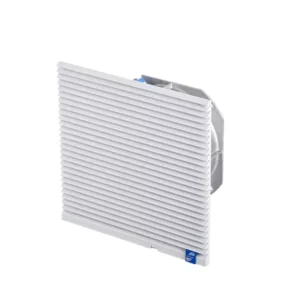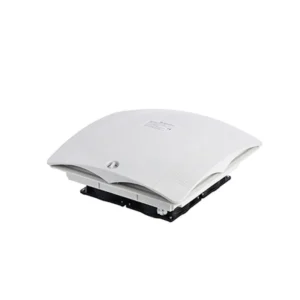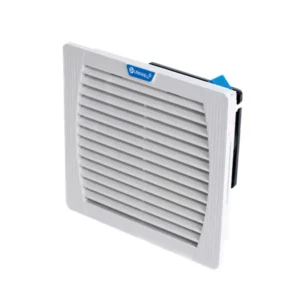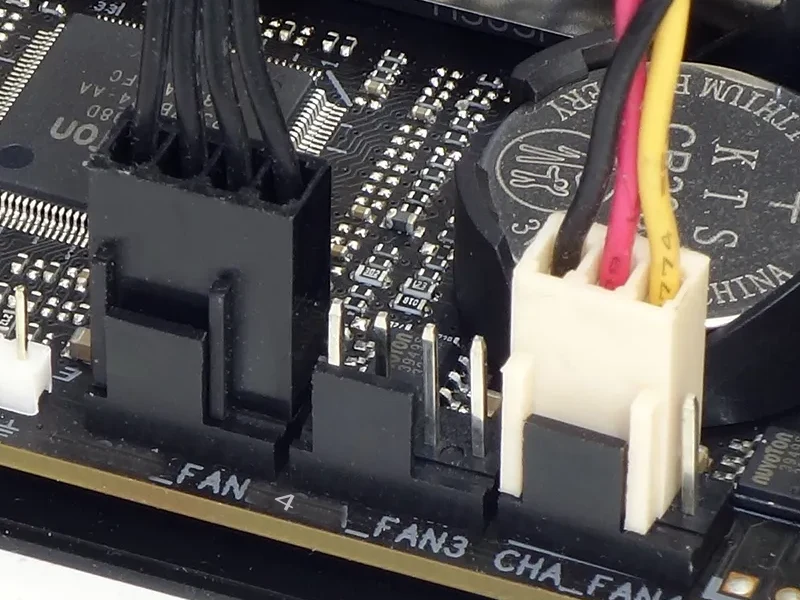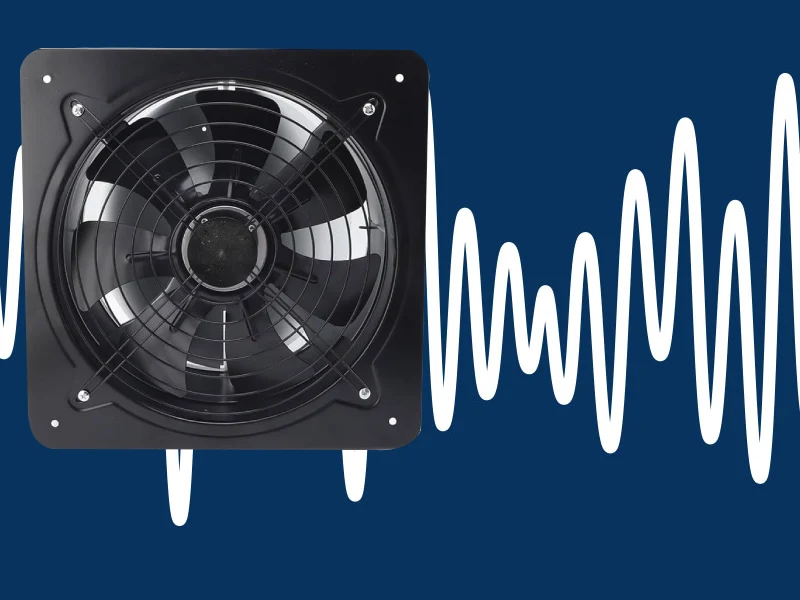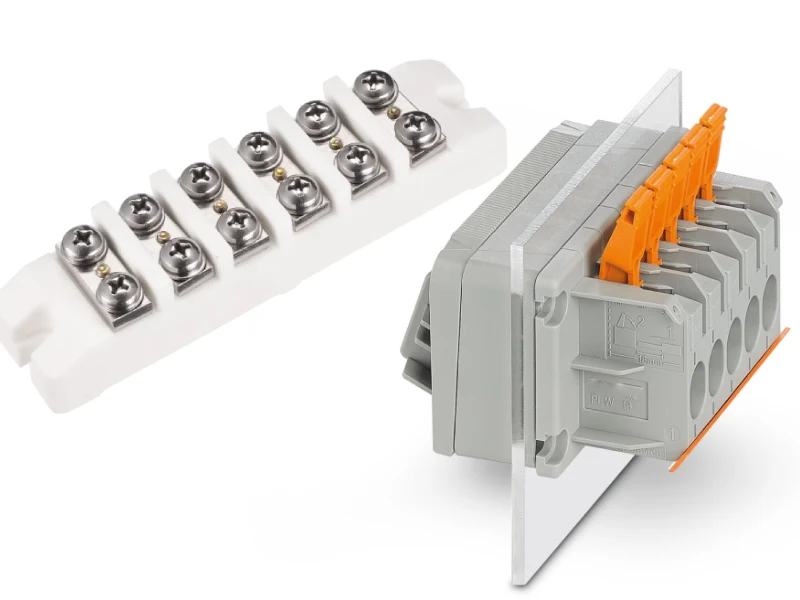You might wonder what is an ec fan and why it matters for modern buildings. An EC fan uses advanced motor technology to move air efficiently, helping you keep spaces cool and ventilated. Energy efficiency has become crucial, especially since fans and blowers make up about 15% of the total energy used in commercial buildings. Over the past decade, more companies have switched to EC fans, thanks to their smart design and lower energy use.
Ec Fan Key Takeaways
- EC fans use a special brushless motor with built-in electronics to run quietly, last longer, and save energy.
- They can reduce energy use by up to 70%, helping lower electricity bills and protect the environment.
- EC fans adjust their speed automatically, giving you precise airflow control and less noise.
- These fans need less maintenance and have a longer lifespan than traditional AC fans.
- EC fans work well in many places, from small control cabinets to large industrial systems, making them a smart choice for efficient ventilation.
What is an Ec Fan
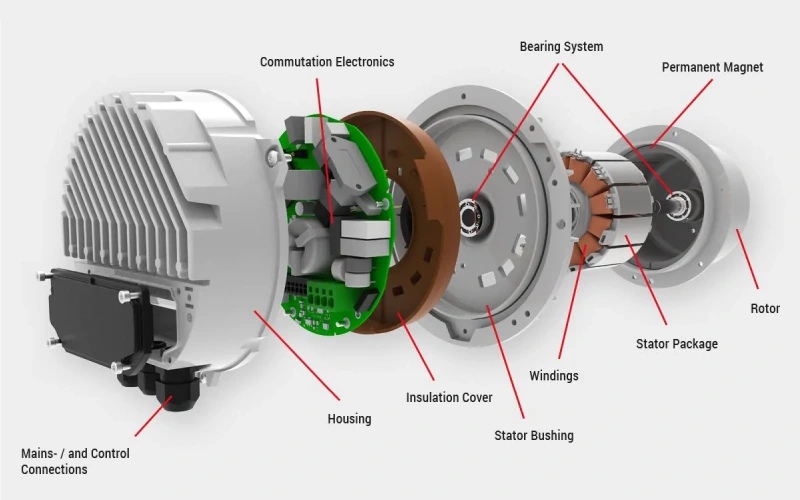
Definition
If you have ever wondered what is an ec fan, you are not alone. Many people want to know how these fans work and why they are so popular in modern ventilation systems. An EC fan, or electronically commutated fan, uses a special type of motor called an EC motor. This motor combines the best parts of AC and DC motors, creating a new category that stands out for its efficiency and smart control.
Here’s what makes an EC fan unique:
- It uses a permanent magnet, brushless DC motor with built-in electronics.
- The electronics convert AC power from your wall into DC power for the motor.
- The motor uses electronic commutation, which means it controls the flow of electricity without using brushes. This makes the fan quieter and more reliable.
- The rotor (the spinning part) has permanent magnets, while the stator (the stationary part) has windings that get energized based on the rotor’s position.
- Sensors inside the fan help the electronics know exactly when to power each part, so the fan runs smoothly and efficiently.
You will find that what is an ec fan comes down to this: it is a fan with a smart, electronically commutated motor that gives you better performance, less noise, and longer life.
Core Features
When you look at what is an ec fan, you will notice several features that set it apart from traditional fans. These features help you save energy, reduce noise, and get more control over your ventilation.
| Feature | How It Helps You |
|---|---|
| Brushless DC Motor | No friction from brushes, so the fan lasts longer and uses less energy. |
| Integrated Electronics | Lets you control the fan speed easily and keeps it running smoothly. |
| High Energy Efficiency | Uses up to 70% less energy than regular AC fans, saving you money. |
| Low Noise Operation | Runs quietly, making your space more comfortable. |
| Longer Lifespan | Fewer moving parts mean less wear and tear, so you replace it less often. |
| Compact Design | Takes up less space, so you can fit it in tight spots. |
| Advanced Functionalities | Offers features like constant pressure and airflow control. |
You might ask, why does what is an ec fan matter for your building or project? The answer is simple: EC fans can operate at up to 90% efficiency, which means they turn almost all the electricity they use into moving air. They also adjust their speed automatically, so they only use as much power as needed. This makes them perfect for places where you want to save energy and keep things quiet.
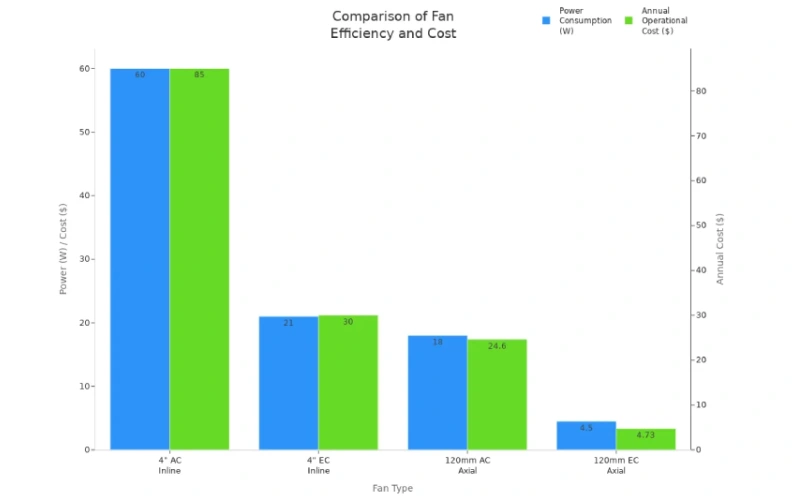
Here are some more reasons why you might choose an EC fan:
- The electronically commutated motor means less maintenance and fewer breakdowns.
- You get precise speed control, so you can match the fan’s airflow to your needs.
- The fan’s built-in electronics make installation simple—just plug and play.
- EC fans work well in many settings, from control cabinets to large HVAC systems.
Tip: If you want a fan that saves energy, runs quietly, and lasts a long time, an EC fan is a smart choice. When you ask what is an ec fan, remember that it is all about efficiency and control.
How EC Fans Work
Motor Technology
When you look inside an EC fan, you will find some impressive technology at work. The heart of the system is the brushless dc motor. This type of motor stands out because it uses permanent magnets on the rotor and coil windings on the stator. You do not have to worry about brushes wearing out, which means less maintenance and a longer lifespan.
Here’s what makes the ec motor assembly special:
- It uses a brushless dc motor, so you get high energy efficiency and quiet operation.
- The motor includes built-in electronic controllers that regulate voltage and current.
- You will notice the fan runs cooler than traditional motors, which helps your equipment last longer.
- The design eliminates sparks and reduces noise, making your workspace more comfortable.
Traditional AC motors often use carbon brushes and electromagnets, which can create more noise and require more upkeep. In contrast, the brushless dc motor in an EC fan gives you reliable performance and better control. You also get a compact design, so you can fit these fans into tight spaces without losing power.
Note: The cooler operation of EC fans means less heat in your system, which can even reduce the workload on air conditioners.
Speed Control
One of the best things about EC fans is how easily you can control their speed. The built-in electronics let you adjust the fan’s speed to match your needs. You do not need extra controllers or complicated wiring.
- EC fans use electronic control circuitry to convert AC power to DC, which allows for precise speed adjustment.
- You can set the fan to run only as fast as needed, saving energy and reducing noise.
- The fan responds in real time to changes in temperature, airflow, or pressure.
- Variable speed control means the fan does not always run at full speed, so it lasts longer and uses less electricity.
If you lower the fan speed by just 20%, you can save almost 50% on power. That is a big difference for your energy bill! The smart speed control also means your fan will not wear out as quickly, since it avoids running at top speed all the time.
Tip: EC fans help you meet energy efficiency standards and keep your equipment safe by adjusting airflow automatically.
Energy Efficient Technology
Efficient Operation
You want your ventilation system to work smarter, not harder. EC fans deliver just that. These fans use energy efficient technology that combines a brushless DC motor with advanced electronics. This setup gives you increased efficiency and minimum power consumption every time the fan runs. You get the airflow you need while using much less electricity than traditional fans.
Let’s look at what this means for your building or project:
- EC fans can cut power consumption by up to 70% compared to AC fans.
- You see real savings on your operating costs because the fans only use the energy they need.
- The fans adjust their speed automatically, so you always get minimum power consumption and maximum efficiency.
When you use EC fans in commercial spaces, you help lower carbon emissions. These fans use less electricity, which means power plants burn fewer fossil fuels. For example, in air curtain systems, EC fans can save over 3,000 kWh each year compared to AC fans. That’s a big win for both your wallet and the environment.
You can trust the quality of EC fans, too. Many models carry certifications like CCC and CE. These certifications show that the fans meet strict international standards for safety, reliability, and efficiency. They also make it easier for you to use these fans in projects around the world.
Tip: If you want to reduce energy consumption and operating costs, EC fans are a smart upgrade for any ventilation system.
Longevity
You want your equipment to last as long as possible. EC fans help you reach that goal. Their brushless design means there are no brushes to wear out, so you get less mechanical wear and tear. This leads to a longer lifespan and fewer breakdowns.
Here’s a quick comparison:
| Feature | EC Fans | AC Fans |
|---|---|---|
| Motor Type | Brushless DC | Traditional with brushes |
| Maintenance Requirement | Minimal to none | Regular maintenance needed |
| Lifespan | 10–15 years | 5–8 years |
| Mechanical Wear | Very low | Higher |
| Operating Temperature | Lower (less stress) | Higher (more stress) |
You will notice that EC fans often last 10 to 15 years, sometimes even longer in clean environments. AC fans usually last about half as long. The efficient operation of EC fans also means less heat, which protects the motor and other parts. You spend less time and money on repairs, and your equipment stays up and running.
Note: With EC fans, you get reliable performance, reduced energy consumption, and lower operating costs for years to come.
EC vs AC/DC Fans
Recommended products
Key Differences
When you compare an EC fan to traditional AC or DC fans, you notice some big differences right away. EC fans use advanced electronics and brushless motors, while AC fans rely on older technology. This change brings a boost in efficiency and control.
Here’s a quick look at how these fans stack up:
| Feature | EC/DC Fans (Brushless) | AC Fans |
|---|---|---|
| Energy Efficiency | Up to 70% less power consumption | Higher power consumption |
| Noise Levels | Much quieter operation, less vibration | Louder operation, more vibration |
| Lifespan | Longer lifespan due to less wear | Shorter lifespan due to wear |
| Control | Precise speed control possible | Constant speed, less control |
You get up to 90% efficiency with an EC fan. That means you use much less energy and create less noise. The brushless design also means fewer moving parts, so your fan lasts longer and needs less maintenance. AC fans often run at a fixed speed, which wastes energy and makes more noise. DC fans offer some control, but they can’t match the high performance or efficiency of EC models.
Advantages
Choosing an EC fan gives you several clear benefits. You save on energy, enjoy quieter spaces, and reduce your operating costs over time. Even though EC fans may cost more upfront, they pay you back with lower bills and fewer replacements.
- You get up to 70% energy savings compared to AC fans. That’s a huge boost in efficiency for your system.
- EC fans run quietly, making them perfect for offices, hospitals, or any place where noise matters.
- The advanced electronics let you adjust fan speed easily, so you always get the airflow you need without wasting power.
- The brushless motor design means less wear and tear, so your fan can last up to 70,000 hours.
- EC fans support a wide voltage range, so you can use one model in many places.
- You get more airflow in a smaller package, which helps with cooling and extends the life of your equipment.
Tip: If you want a high performance ventilation solution that lowers your energy use and keeps your system reliable, EC fans are the smart choice. You will see the difference in efficiency and long-term savings.
Applications with Linkewell
Fan Filter Unit Uses
You want your equipment to last and run smoothly. That’s where Linkewell’s fan filter units come in. These units fit right into control cabinets, electrical panels, and even telecom enclosures. They keep your sensitive electronics cool and free from dust, moisture, and other contaminants. You get a compact design that’s easy to install, plus strong airflow that protects your devices.
Here’s how these units help in real-world settings:
- The filter removes tiny particles, keeping the air inside your cabinet clean.
- The internal fan draws air through the filter, creating a steady flow that prevents overheating.
- You can easily replace the filter, which means less downtime for your equipment.
- The fan filter unit supports different voltages and sizes, so you can match it to your project.
Note: Linkewell’s fan filter units use energy-efficient EC motors. You save on power bills and reduce noise, all while extending the life of your equipment.
Industrial Solutions
Linkewell’s solutions go beyond just cabinets. You’ll find their EC fans in factories, data centers, renewable energy systems, and more. These fans help cool electrical panels that control machines, manage power, and keep communication equipment running. You get reliable performance, even in tough environments.
| Application Area | Description |
|---|---|
| Industrial Automation | Keeps machinery panels cool for reliable operation. |
| Power Distribution | Prevents overheating in power management panels. |
| Telecommunications | Maintains efficient cooling in communication equipment. |
| Data Centers | Supports optimal performance by managing heat in server panels. |
| Renewable Energy Systems | Protects sensitive electronics in solar and wind installations. |
| HVAC Systems | Cools control panels in heating and air conditioning systems. |
You can trust Linkewell’s products worldwide. They hold CE, RoHS, and UL certifications, so you know they meet strict safety and quality standards. Some models even have IP54 or IP65 ratings for dust and water resistance. Linkewell’s global presence means you get fast delivery and support, no matter where your project is.
Tip: When you choose Linkewell, you get a partner that understands industrial needs and delivers reliable, certified solutions for every application.
You’ve seen how EC fans boost efficiency, cut energy consumption, and make maintenance simple. These fans use brushless motors and smart controls to lower consumption, reduce noise, and extend equipment life. Many industries now choose EC fans for their reliability and fast return on investment.
Ready to upgrade? Reach out to Linkewell for expert advice or visit their contact page to get started.
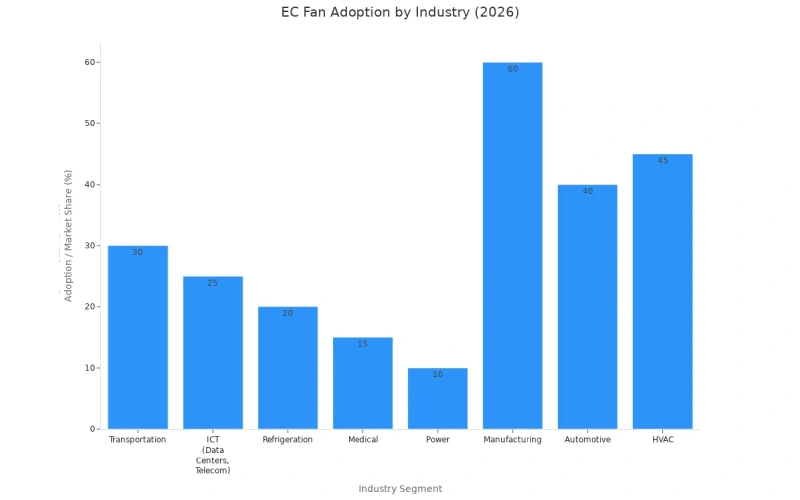
FAQ
What makes an EC fan different from a regular fan?
You get a fan with a brushless motor and built-in electronics. This design gives you better energy savings, quieter operation, and longer life. EC fans also let you control speed easily, which helps you match airflow to your needs.
Can I use EC fans in outdoor or dusty environments?
Yes, you can. Many EC fans, like Linkewell’s fan filter units, come with IP54 or IP65 ratings. These ratings mean your fan can handle dust and water, making it safe for outdoor or harsh industrial spaces.
How do I know when to replace the filter in a fan filter unit?
You should check the filter every few months. In clean areas, replace it every 4–6 months. In dusty or outdoor spots, check and change it every 1–3 months. A clogged filter reduces airflow and cooling.
Are EC fans hard to install or control?
Not at all! Most EC fans offer plug-and-play installation. You can adjust the speed with simple controls or built-in electronics. You do not need special tools or advanced wiring skills.
Conclusion
What is an EC fan? It’s the future of ventilation. With brushless motors and built-in electronics, EC fans offer unmatched energy efficiency, quiet performance, and extended lifespan. They adapt airflow based on real-time needs, cutting energy use by up to 70%. From control cabinets to industrial systems, EC fans deliver smarter, cooler, and greener performance—making them the top choice for modern buildings and advanced ventilation systems.

